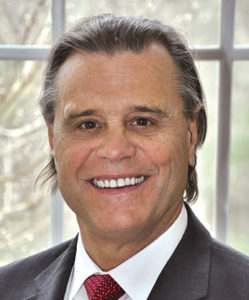By Bruce Stanley
It’s time we examine healthcare innovation from the ground up
Technological innovations are surfacing all across our healthcare world. Many entrepreneurs, clinicians and patients are searching and waiting for the holy grail of cures to appear.
Have you ever wondered how all these innovations stack up to each other? Will they ignite the course of better health, or are they just other vehicles to extend the life of an existing idea, product or company? Do they lead to real reform of the system? Is innovation just a buzzword for more costs, more operating challenges, more work for clinicians and just plain old more of everything (except, often, for more care)?
Opinions differ on how healthcare innovations actually affect systemic costs. What most patients experience is that their costs usually go up and rarely come down. The prevailing rationale is that the inventors need to be compensated for all their expensive research and development. Over time even the cost of generic products ends up moving higher. While many innovations lead to improved care, they can become so costly that patients are unable to afford them and decide not to undergo the treatments or take medications as prescribed.
It has become a binary system choice of picking either A or B, all the while using the same tired economic models for creating, delivering and paying for care. When we debate universal care, does it really matter, since the economic model never changes?
 Given that our delivery and economic model for healthcare came about after World War II, one would think it’s time to re-exam how we approach the issue from the ground up. Our industry needs to embrace and encourage a real innovation challenge. Why not encourage our leading-edge innovators to create an entirely new economic model that sets our healthcare system and structure on a futuristic course better suited for the 21st century?
Given that our delivery and economic model for healthcare came about after World War II, one would think it’s time to re-exam how we approach the issue from the ground up. Our industry needs to embrace and encourage a real innovation challenge. Why not encourage our leading-edge innovators to create an entirely new economic model that sets our healthcare system and structure on a futuristic course better suited for the 21st century?
More than 50 years ago, the United States set an aggressive and even somewhat naïve space exploration strategy. That effort led to more innovation and new technology than anyone could have imagined. Why can’t we do the same with healthcare, rather than constantly arguing the merits of an old model?
We should envision a new system of economics, clinical training, technology, product creation, delivery and sales, and innovation design that starts at the heart of all patients’ care. This new economic healthcare model should be accessible and affordable for patients and still be profitable for the industry. This idea is not to be confused with government-provided healthcare in the current framework. Some of the potential new core clinical competencies and technologies may not even exist today. The discussion need not be socialism or capitalism, just healthcare.
To be fair, many product innovations do save lives and do affect the care and costs in the system. Industry developers create some pretty terrific robotics, techno devices, software and apps. However, when industry leaders discuss these innovations, they inevitably talk about how about sales projections and financial opportunities for investors. What they rarely talk about is how these ideas might revolutionize care and lower costs in the entire system, and specifically for each patient. We are expected to believe that profitable returns equal better patient outcomes. Implementing change using a tired model is just less effective clinically and economically.
Many times, the self-described innovations produce results of care that are mixed. EHR is one example. Even with this technology, patient records are lost or corrupted, clinicians are exhausted from the tedious hours of data manipulation, and insurance coding confusion grows at unprecedented rates while patient healthcare is declining. Creating a new healthcare economic model won’t be easy. But with all the energy being put on “innovation of things,” one has to wonder, are we afraid of what a new economic model might look like? I’m not criticizing the investments or the innovators. What I am suggesting is that in and of itself, these activities don’t drive systemic economic innovation.
So where do we look for the real economic innovation in healthcare? Any clinician will tell you we need to stop and reevaluate what is really occurring. We’ve never answered the fundamental question: Is healthcare a privilege or a right, or for that matter, is it like breathing air and necessary to sustain our society? We need to flip the process on its end and challenge how we can fundamentally change the system. Real transformation of care and economics may be uncovered when examining the industry through a completely new lens. That said, the question remains: Can the economic underpinning materially change, and is innovation in that new model evolutionary or non-existent?
Can this industry rally in support of its own headline – Health and Care? When the industry better balances this with profitability, then quite possibly a new model will emerge where innovative healthcare will lead all aspects of care while guaranteeing its own long-term economic viability.
Bruce Stanley is a global supply chain, business development and contracting operations advisor and consultant with over 30 years in the healthcare industry. In 2011, he co-founded The Stanley East Consulting Group, a consulting practice specializing in supply chain, contracting, business development, order fulfillment and project management for small and medium-sized companies, startups, and companies in transition or divestiture. He is also a published author of many commentaries on healthcare processes, and an adjunct MBA professor teaching global supply chain, contracting and healthcare informatics and regulations. He previously served as senior director, contracting operations, for Becton Dickinson. He can be reached at brucejstanley@gmail.com

